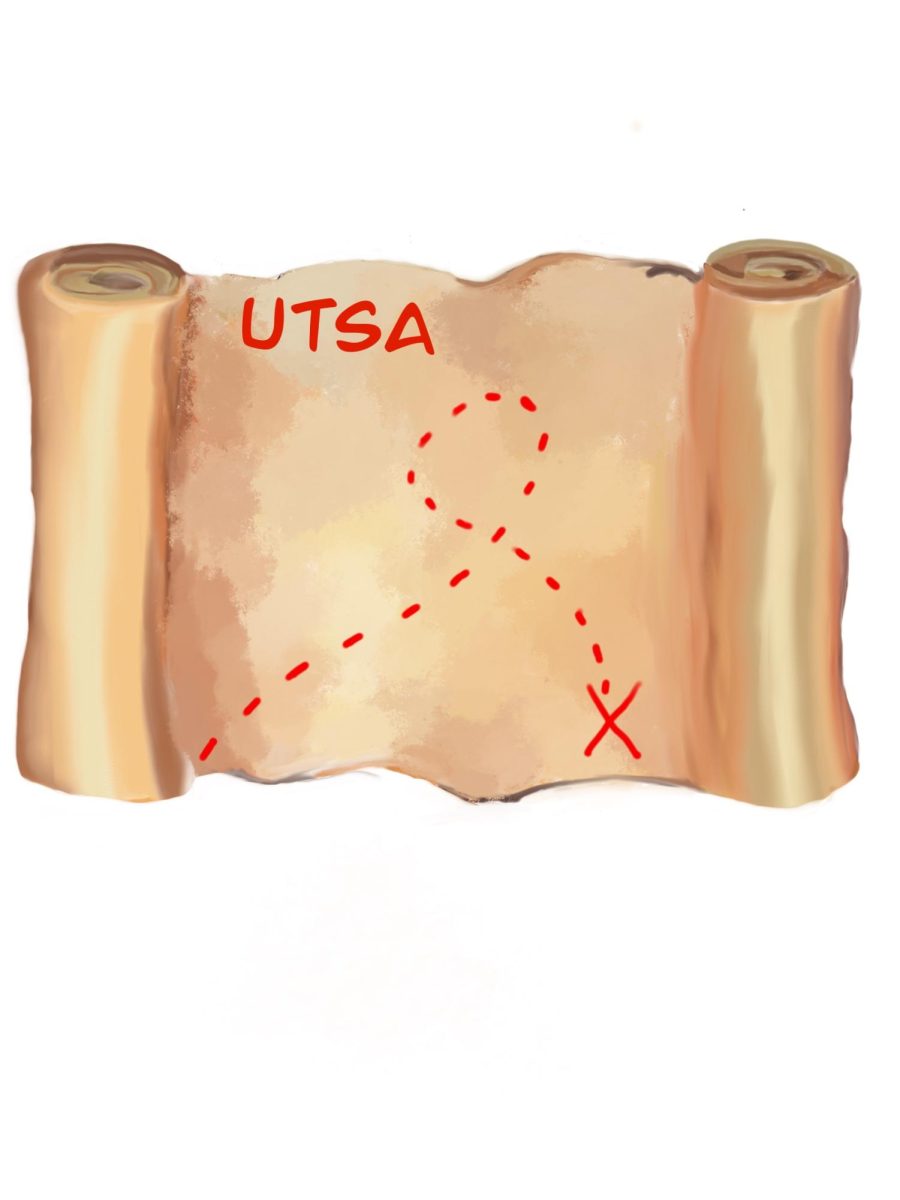The McNay Art Museum is notably filled with beautiful and delicate pieces. But what’s even more beautiful is the adoration exuding from the staff and the patrons, and the feeling of respect and love for art-made obvious by immaculate rooms, lovely displays and impressive collections-envelopes as one walks through McNay’s pristine galleries.
Every Thursday, entrance into this world of art is free thanks to HEB. With that the free admission, visitors are invited to participate in a focus talk led by the Director of Education for the McNay, Kate Carey. Each focus talk centers around one piece of art, and last Thursday’s discussion was over the McNay’s version of Claude Monet’s painting, Nympheas (Water Lilies).
At the beginning of the discussion, Carey told the group of curious onlookers, “Here at the McNay, we like to encourage visitors to have a conversation about a particular work of art or about a particular artist.” Audience members gladly converse with her about the painting. One woman said it exuded a feeling of tranquility and serenity. A gentleman thought “Water Lilies” represented a wonderful balance between light and nature. Another gentleman said he thought the painting looked sporadic, as if it took no effort to create. He received angry, disbelieving stares.
Monet painted approximately 250 versions of “Water Lilies” over the course of 25 years, and the canvas in the McNay’s collection is dated between the years of 1916-1919. Inspired by Japanese artwork, Monet was fascinated with light and its effect on nature.
Some “Water Lilies” are dark, as if they were painted at night. Others are light and airy, but they all lack dimension, which is why Monet is considered an Impressionist; he painted differently than his contemporaries.
Carey then asked us where we recognized “Water Lilies” from. Apparently, it’s everywhere. Answers ranged between books, tote-bags, calendars and magazines. She referenced the Mona Lisa and stated that a singular painting that’s so widely known loses its meaning over time because it’s printed everywhere, but with “Water Lilies,” which has so many different versions, a person never knows exactly which Water Lilies he or she is looking at.
Located in the artificially lit Zilker Gallery at the McNay, Water Lilies is part of the collection of The Tobin Theatre Arts Fund and is one of approximately 20,000 pieces of art in the museum. Although it should be bathed in natural light as Monet intended it to be, “Water Lilies” is exquisite- not sporadic.











